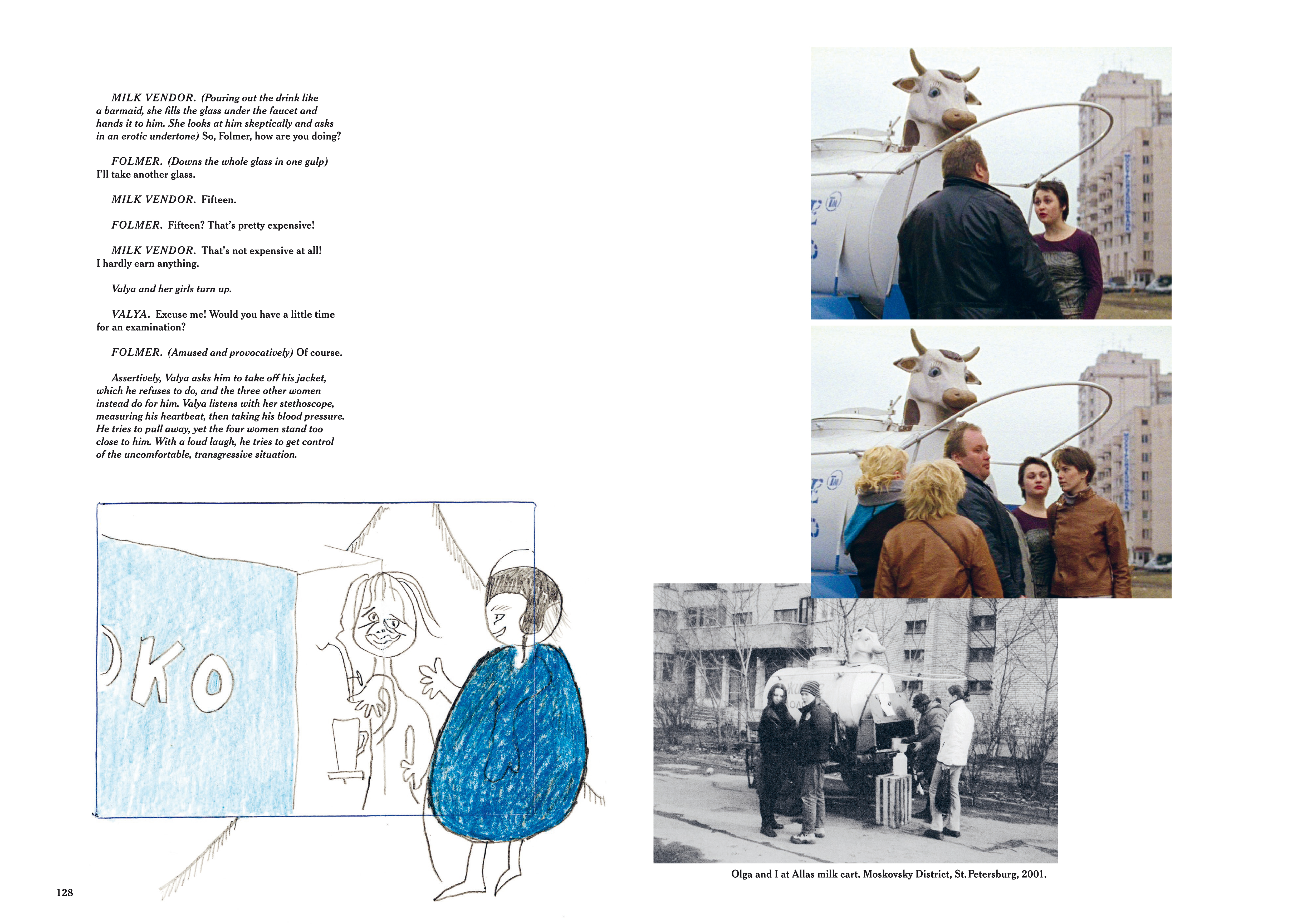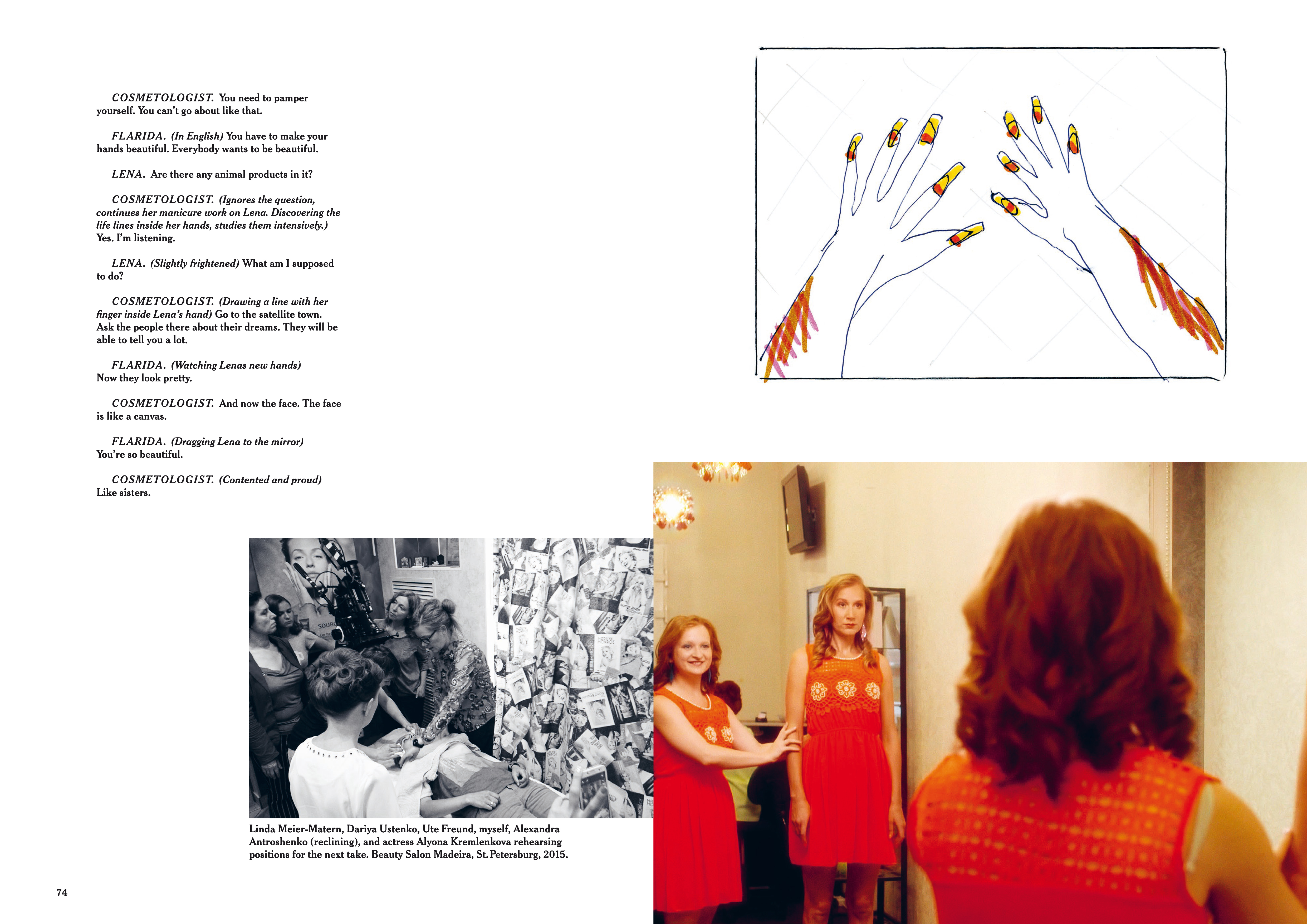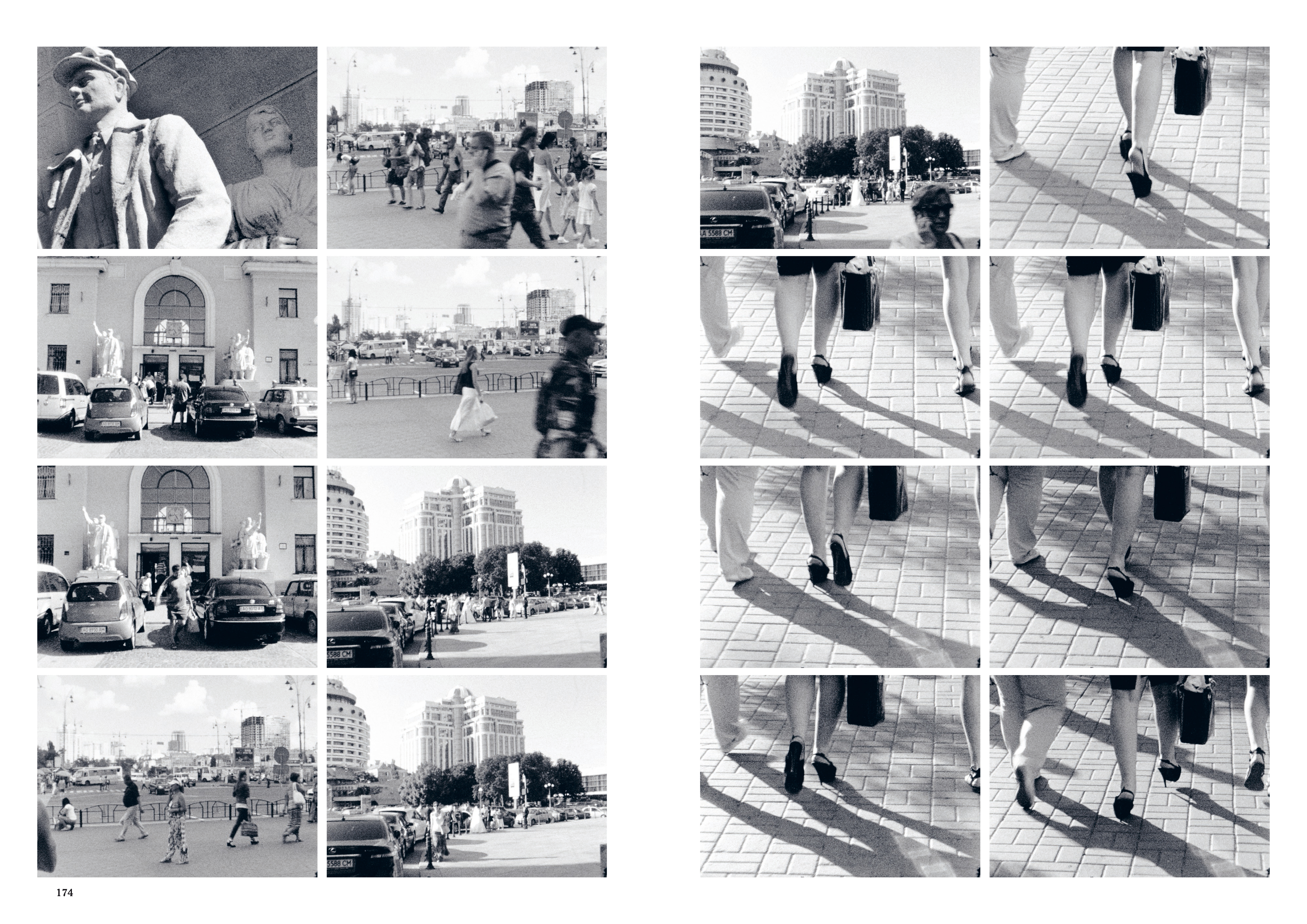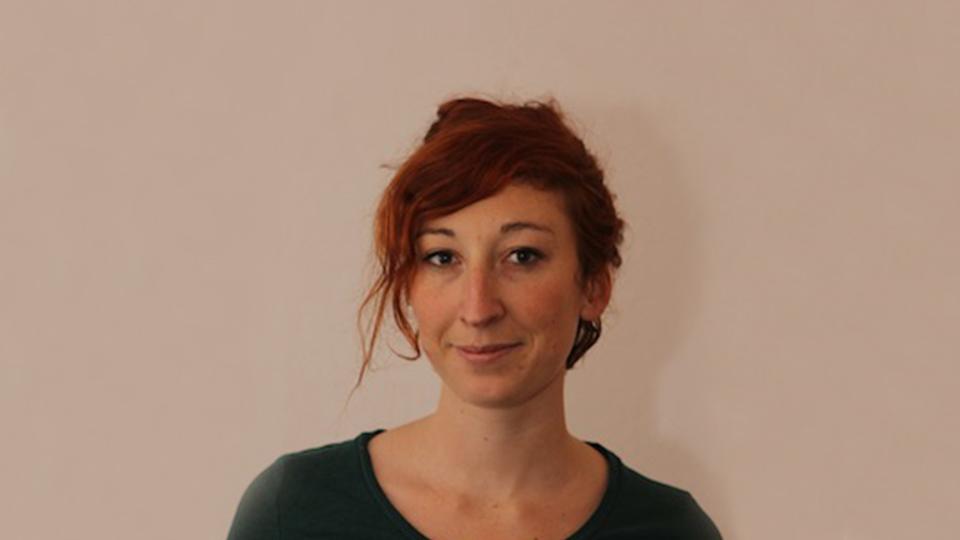Sisters Alike. Female Identities in the Post-Utopian (Book Review)
Lene Markusen, Sisters Alike. Female Identities in the Post-Utopian (Leipzig: Spector Books, 2019), 184PP.
It may seem a curious and difficult project to try to translate the unique poetics of moving images into book form. Danish filmmaker Lene Markusen has taken up the onerous task in her recently published book Sisters Alike. Female Identities in the Post-Utopian. What emerges feels like a wholly individual composition, marked by an unparalleled interpictorial approach that weaves her sketches and photographic impressions of Russia—in particular, its female protagonists—with archival materials and stills from two of her films, GRAD (2004) and Sankt—Female Identities in the Post-Utopian (2017). The book need not be read adjacent to the films, but is designed to stand alone as an intimate portrayal of one filmmaker’s methodology. It is a workbook that is concerned with process over result, and includes seemingly trivial and private details (a filming permit, shooting and audio logs, for example) that propel us into the largely unseen, mundane and universal reality of creative work.
Markusen is an artist and filmmaker, whose work reflects on cultural norms and patterns relating to gender, religion and historiography—both individually and socially—through sound installations, videos and films. She taught time-based media at the University of Fine Arts (HFBK) Hamburg until 2017, while working on her own, layered artistic practice. Markusen has a deep interest in storytelling: from anecdotes to fictional plots to historical and political narratives. The completion of a book is a new strategy for Markusen, and functions as a meditation on the practice of narratology more generally. In this sense, Sisters Alike is not a book about her films so much as it is a book about the process and the act of visual storytelling, more generally.
The introductory text for the book, entitled “Near Moskovsky Prospekt,” sets the stage for Markusen’s long-held fascination with Russia’s cultural capital, St. Petersburg. It began in 1993, when she visited the city from Denmark, as a young student of the Russian language. The details in her initial mise-en-scène are overwhelmingly sartorial: the author transports us back to an early ‘90s Russia, where rhinestone-encrusted denim and teased hair already seems a thing of the past when observed by a young Scandinavian woman. Through these stylistic hints, as well as the billboard ads and fluctuating cityscape described during this moment of great transformation, we get the sense that certain elements of post-socialist Russia are lagging behind global trends. But this is not meant as a criticism so much as a way of situating the author, who experiences moments of loneliness and culture shock in her first weeks in Petersburg, feeling, herself, to be unstylish and ill-at-ease. There is both a sense of her alienation from the culture in which she finds herself, and an internal sense of foreignness as she comes to grips with the stranger within. Markusen’s resulting films aimed to translate that atmosphere by focusing on intercultural and intergenerational relationships built between women during the post-utopian moment.

Lene Markusen, Pages 26 + 27 of Sisters Alike. Female Identities in the Post-Utopian, Spector Books, 2019.
Thwarting chronology, Sisters Alike begins with Markusen’s later film, Sankt, wherein the main character Lena travels to Petersburg, 26 years after the dissolution of the Soviet Union, to complete her practice-based PhD, entitled “Female Identities in the Post-Utopian.” Markusen describes the relationship between this later film and her earlier observations from the city and its people: by the time she began filming Sankt, in 2015, she notes that “these impressions [from the 90s and early 2000s] belonged to a vanishing world.” Yet something remains in the demeanor and style of Petersburgers that resonates in both films and throughout the book. Markusen’s considerate portraits of the young women she encounters in St. Petersburg touch on the cosmetic, but are not limited to these superficial concerns. In Sankt, she follows the stories of two women—Valya and Flarida—and how their hopes for the future are formulated, expanded and, sadly, often disappointed. Valya, for example, has aspirations to open a spa that will be a “tropical paradise.” The economic reality doesn’t match her high hopes, yet she clings to the dream almost delusionally. In this story, among others, Markusen captures something of the disappointment that accompanied the fall of Communism and the mythical promises of this new “free” world.
Towards the middle of the book, the protagonist Lena’s newfound friend, Flarida, insists that she submit to getting a makeover from the local cosmetologist. On the left-hand page, there’s an excerpt from the script, in which the cosmetologist suggests that Lena needs to “pamper herself”; below that, a photo of Markusen positioning the shot for the film; on the opposite page, there’s a detailed first-person-perspective drawing of two heavily manicured hands and a still from the finished film, where Lena stands in front of a mirror, dressed and made-up, next to Flarida.
A trifecta of sketches, archival materials such as photos, film stills or shooting logs, and script excerpts, arranged by graphic design studio HIT, can be found on nearly every page of the book. The interpictorial nature of the layout suggests that the process of filmmaking is incredibly layered, both visually and textually, and that the storytelling involved is never relegated to one medium.

Lene Markusen, Page 174 + 175 of Sisters Alike. Female Identities in the Post-Utopian. Spector Books, 2019.
Markusen’s drawings are direct and unpretentious in a way that endears them to the reader. Her use of pencil crayon and watercolour, as well as simple human figuration, makes the sketches relatable and accessible to a wider audience. The cover image of the book depicts a large billboard that Markusen says she used as a marker to find her way in the city, advertising “NUTS”. The filmmaker drew the billboard from memory, returning to find it completely changed when she began filming GRAD, 7 years after her first encounter with the city.
Curiously, Markusen also presents highly personal archival documents from her time living in Russia, as well as her work there as a filmmaker, as though they have the weight of historical artifacts. In this way, the intimate details of her creative process become universalized, launching the project beyond a kind of hermetic, scrapbook-style workbook and pulling the reader into the minute details as if she were a co-producer of the work. At certain points, a randomly placed image or blank page will throw us off the carefully-constructed story, but generally the book has a strong—albeit unusual—coherent narrative, despite its varied time periods, characters, and practical concerns.
The time gap between Markusen’s two films is a particularly interesting storytelling device, given the immense transformations of the period. The female protagonists in GRAD, which was conceived at the turn of the millennium, have a fierce, almost revolutionary fervor and criticality that seeps into their relationships to one another, across generations. They are decidedly anti-nostalgic. Later, in Sankt, we see some of this confidence and hope for the future unravelling, or at least being tempered by the new, harsh realities of capitalist society.
Included in the book is a photograph taken by Markusen in 2015 in St. Petersburg, depicting a woman called Dasha who strikes a model-like pose for the filmmaker on Kollontai ulitsa, a street named for Alexandra Kollontai, a Russian Communist revolutionary and feminist.

Lene Markusen, Dasha on Kollontai Ulitsa, St. Petersburg, 2015.

Lene Markusen, Pages 74 + 75 of Sisters Alike. Female Identities in the Post-Utopian. Spector Books, 2019.
The image encapsulates the juxtaposition between the practical, rights-based feminism of 1920s Russia and its more sex-positive, contemporary version. Throughout the book, Markusen seems to subtly critique this disconnect between the millennial women she encounters, who are fixated on appearance, and the revolutionary feminists of the past. The ideological nature of state Communism in Russia may have meant that subsequent generations, free from state Communism’s hold, rejected all things tainted by militancy. While this militancy seems to have returned, at least performatively, with the rise of groups like Pussy Riot, the period that Markusen is concerned with was marked by disillusionment with all heroic figures. Nevertheless, the older generation of women encountered in the book and the films do maintain an insistence on heroism. At any rate, the tension between hero and anti-hero is integral to the construction of female identity at work in Sisters Alike.
By way of concluding her book, Markusen includes a series of black-and-white stills from her 2012 film “Visiting Ukraine”. The grid of images shows street-style photography of women’s legs walking in a crowd, religious figures, and local monuments. Though somewhat disconnected from the larger context of the book, the images tie up many of the filmmaker’s conceptual concerns, wordlessly, by leaving us with a series of impressions that emphasize the disparity between the lived reality of women in post-Soviet countries, on the one hand, and the nostalgic insistence on monumentalism seen throughout the cityscape, on the other. A clash of worlds that is still, 30 years later, the subject of negotiation across gendered and generational territories.

Lene Markusen, Page 174 + 175 of Sisters Alike. Female Identities in the Post-Utopian. Spector Books, 2019.




